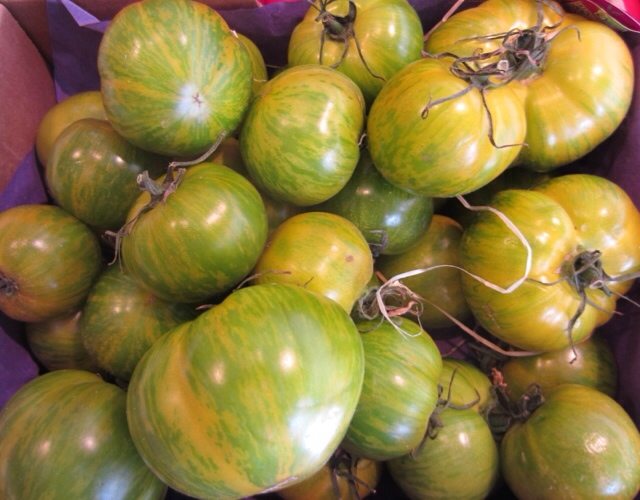I have been writing about the heirloom tomatoes available in the produce markets here in France and their incredible flavor. Apparently scientists have come to the same conclusion. The picture above is from Syngenta, an innovative agribusiness, not afraid to try new things like seeds for these green shouldered tomatoes.
Today, scientists revealed a small but intriguing chapter in the story of the relative loss of taste in store bought tomatoes. They found a genetic mutation that seemed like a real improvement in the tomato’s quality, but which actually undermined its taste.
Sometime before 1930, somewhere in America, a tomato grower noticed a plant that was producing distinctive fruit. These fruit turned red from stem to tip in a uniform way. They didn’t have any of those bothersome green shoulders. They called it the “uniform ripening” trait. In 1930, the agricultural experiment station in Fargo, N.D., released a new tomato variety containing this mutation. The variety was called All Red.
Ann Powell, a researcher at the University of California, Davis, says it spread through the entire tomato industry. “It’s a little hard to find a variety in modern production that doesn’t have it,” she says. Powell is one of the scientists who now has discovered the genetic change responsible for “uniform ripening.”
The researchers discovered that this natural tomato gene, when it works properly, produces those green shoulders on tomatoes as in the picture above. The darker green color comes from the chlorophyll in plant structures called chloroplasts, which is what converts sunlight into sugars for the plant. In fact, those dark green shoulders were making those old tomatoes sweeter and creating more flavor. The uniform-ripening mutation disabled this gene.
Harry Klee has been exploring the chemistry and genetics of tomato taste. Now, Klee says, with some of this new science, we have a chance to undo some of those decisions. “What I tell people is, we can have 100 percent of the flavor [of heirloom varieties] with 80 percent of the agricultural performance of the modern varieties, with very little work.”
Now we just need to get American consumers to recognize that tomatoes like the ones pictured above, or even totally green tomatoes like the ones below are sweeter and have more tomato taste than completely red tomatoes.



